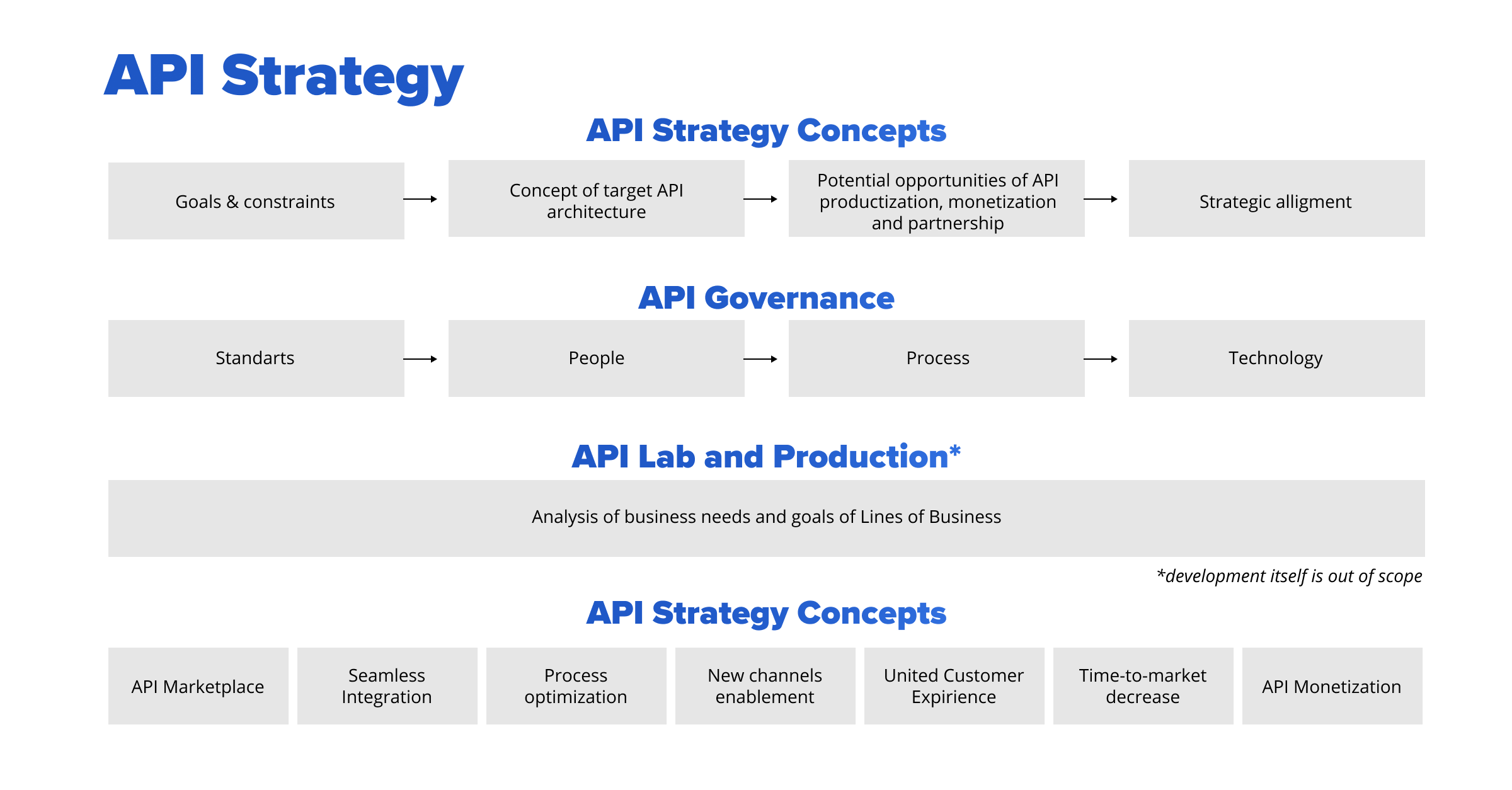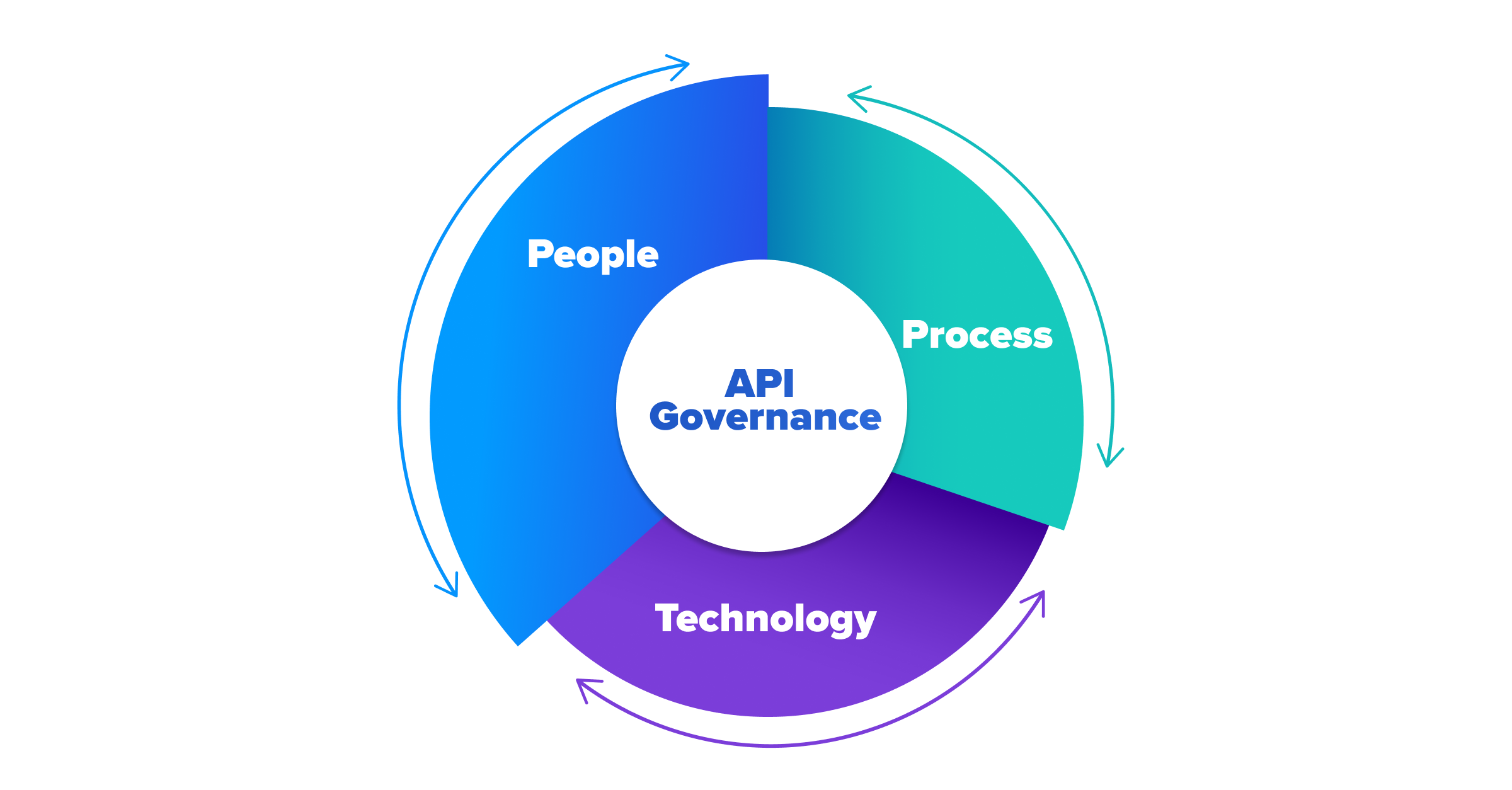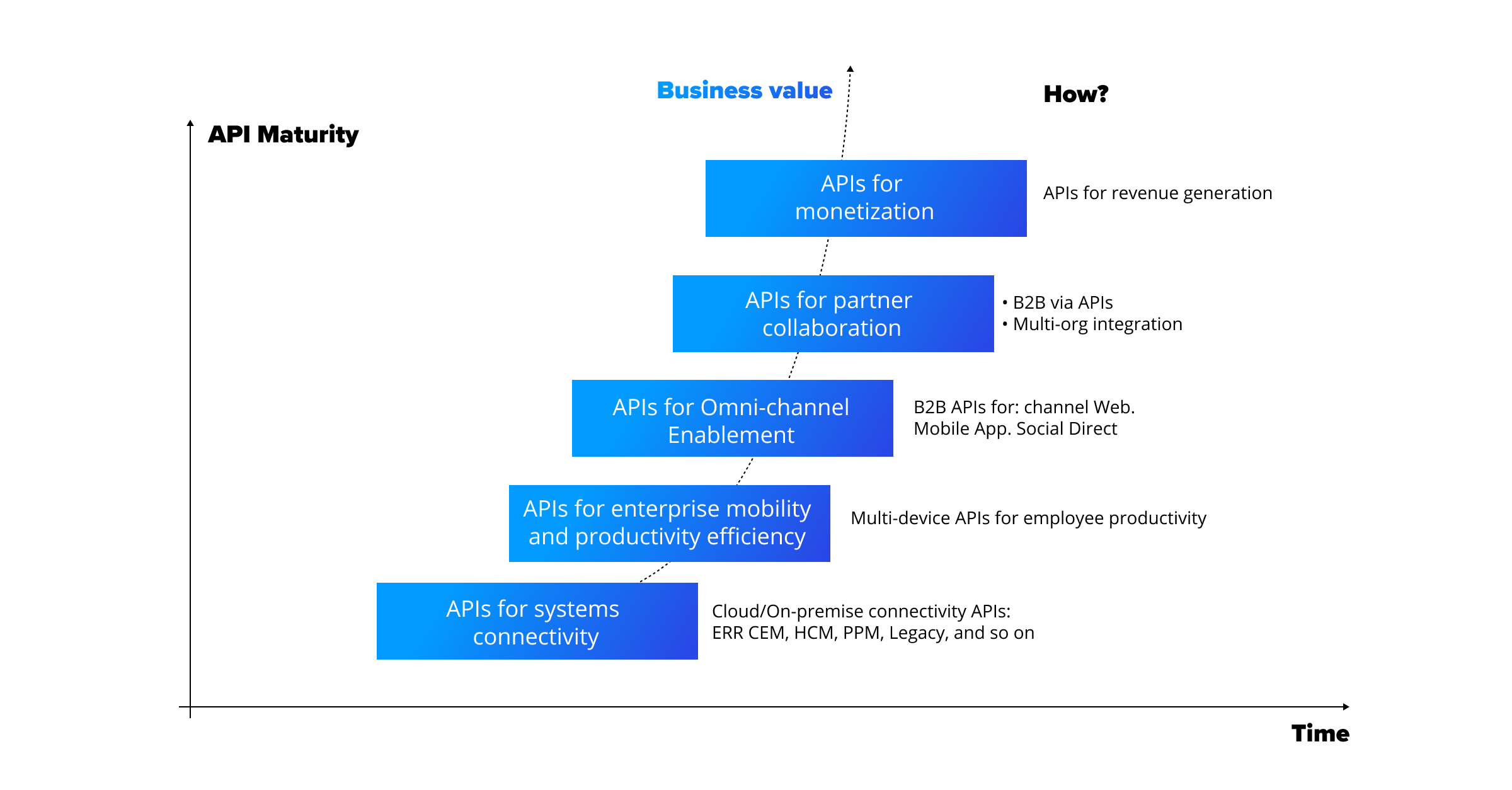
Today, Application Programming Interfaces (APIs), aka digital building blocks, become more popular around the world. The untapped value of APIs has been discovered by early adopters using them to improve operational efficiency, as well as by more mature companies who build API products and monetize them to get extra benefits.
Deciding you want to embark on the API journey is the first step, but what’s next? In the first part of our blog post series, we uncover how to become the leader on the digital market and how to enable the company to reach its full API potential.
What’s an API Strategy
By having a mission, vision, and goal, a company defines its strategy that captures the general direction and its components to achieve the desired state in the future. Now, API economy exposes services and data through APIs to generate value for the business while driving and enabling innovations. There is the necessity to apply it and enrich the business with additional strength. That’s why, together with IT, сloud, and data strategies, an API strategy plays a key role as a part of strategic business plans for innovative, customer-facing companies, as it defines the technical enablement for the business idea.
The API strategy is essential for building a digital ecosystem around APIs. It includes steps for planning API productization and effective leveraging of APIs. The API-first approach should be treated as a natural component of the company’s mindset, and it must be clearly defined and followed. Additionally, the marketing campaign of an API-related initiative can serve as a starting point.
The Building Blocks of a Successful API Strategy
A successful API strategy comprises of the following building blocks: API strategy concept and API governance. The main goal of these is to enable the relevant business use cases. Having analyzed them during the development of the API strategy will ensure the delivery of the maximum value for a company. Even more so, these business use cases serve as the foundation for any API strategy.

Let’s look at each of these building blocks.
To build an API strategy concept, there is a need to analyze the existing company strategies (IT, cloud, and data). This analysis helps build the API strategy in alignment with the company’s ecosystem, and not in silos. Additionally, companies should analyze existing constraints (business and technical) and build the concept of a target API architecture.
At the same time, the crystallization of a blue-sky thinking is critical to businesses. Potential opportunities of API productization, monetization, and partnership – these are just a few areas for forward-thinking companies to be focused on.
API governance is a guidance for establishing and forcing the effective usage of API resources (people and solutions) to ensure the sustainability of an organization’s strategic objectives.
API Governance consists of the following parts:

People
A successful initiative must be driven by leaders and their teams. To do so, a clear vision for creating value via connected experiences and improving operational efficiency must be in place. There is a similar approach for API enablement, which is why there is a need to define the team roles and responsibilities, so that the ownership of the whole API enablement initiative works like clockwork.
Process
Usually, new ideas require process changes. Companies need to launch the “as is” and “to be” business process analysis to then introduce the needed changes for supporting an API initiative. Resistance management must be taken into the account as well, as people tend to omit changes.
Technology
From the technical standpoint, there is a need to build the basis for further API development and usage. It requires some technical solution (API management platform, integration platform) and the whole infrastructure around it. To ensure the constant API usage within the company, the proper framework for planning, developing, deploying, and managing APIs within the API Platform must be defined, otherwise the API initiative is doomed to fail.
To ensure a proper API governance, the API standards for processes, policies, procedures, best practices, frameworks, and patterns should be followed by the company.
The crucial component of the API strategy concept is the identification of the quick wins - real business use cases that could be applied using API enablement to add value to the company. Usually, various Lines of Business (LoB) must be analyzed separately to identify their opportunities. At the same time, the needs of another LoB can be supported simultaneously because of the API reusability.
The Journey of API Maturity
Companies often neglect one more step in building the multi-faceted API strategy: it’s the identification of API maturity level of the company. API maturity defines the ability of an organization to apply API architecture, design, development, testing, and DevOps project practices according to the defined strategic objectives of an API initiative. Technical capabilities of an organization, proper skillset, and an in-depth experience are the setting stones to build on.
Usually, the API maturity correlates directly with the company’s business goals. The more mature the company is, the more complex are its goals. We’re seeing the following trend:

Why is it so important to do an API maturity assessment as early as possible? The answer is obvious: no matter how good the API strategy is in theory; it must be linked to some relevant actions for achieving the desired state. Those actions must be properly identified and designed based on the current state analysis. The inputs for that are captured in the API maturity assessment results.
In the next blog post, we uncover 10 steps behind creating an effective API strategy.
Let’s talk about building your API strategy to find new business opportunities, no matter where you are in your digital journey.

